Part 1: Rebuilding a $1million Ecommerce and Importing Business from Scratch
In this multi-part series I am going to discuss my process and results from relaunching an ecommerce private label from scratch. This is a multi-part series:
- Finding a Niche
- Finding Products
- My Review Strategy
- My Results and Learning Lessons
In October 2016 I sold my ecommerce company. At the time we were doing just under $2million a year in revenue but it took me nearly 10 years to get to that point. I sold my company for a number of reasons, but one of the main reasons was that I felt I could fairly easily recreate an ecommerce business doing $1m in revenue within a year or so. In this blog series I am going to detail my journey trying to get back to this $1million milestone.
In the first part of this series, I will discuss my strategy and goals for getting to $1m in sales. In subsequent posts, I will discuss my strategy for finding products, my product launch strategy, and the initial results.
My Strategy for Getting to $1 million in Sales Within a Year – It's All About the Products
My goal is to get to $1million run-rate within a year. Basically, I mean that by March 2018 I want to be doing $83,333 a month in sales (which works out to a run rate of $1,000,000). I've picked March 2017 as my ‘official' starting point for the business as that's when I received my first sample for a product.
My strategy to get to $1million in revenue is pretty simple. It's as follows:
- Import 100 products within one year within one niche
- Focus on products that I can improve either physically (product improvements/bundling/packaging improvements/etc.) or through online marketing efforts (photo improvements/description improvements/review improvements/advertising/etc.)
- Focus on low-demand/low-competition items with retail prices of $50-250
- Optimize and focus on Amazon but also sell on eBay and my own website/Shopify store
- Focus on other countries, particularly Amazon.ca with the goal to have Canada be 25% of our revenue
Products are Key
From my last company I know your revenue and profits are almost entirely dictated by your products. The goal of Amazon and other marketplaces is not to make it so that people with the best internet marketing skills can sell the most products. It's to make sure the people with the best products can sell the most products. Now it's true that internet marketing skills do play a role in the success of products but, fundamentally, products are the most important thing.
When I'm importing 100 products I fully expect 25% of them to be complete duds that I will not re-order, I expect 50% to be mediocre products that will be re-ordered once or twice a year, and 25% of them to be home-run products. You can do as much Jungle Scout research as you want but often there's little rhyme or reason to determining what products are going to be massive successes. When you're importing it's worthwhile to take a few shots at the wall and hope that something sticks. If you're just starting off you don't have to import 100 different products but you should try to import at least 2 or 3 different products instead of just 1.
Strict Private Labeling Is Dying But There's Lots of Room for Small Improvements
The bad news is that the days of finding products on Alibaba, putting your bar code on them, and selling them online are passing quickly. The only time this really exists is if you're first to market with a Chinese Supplier's product or the competition on Amazon and other channels is terrible. The good news is that there is still tons of opportunity for making small incremental improvements to a product such as through actual product improvements such as physical changes to the product, product bundling, packaging improvements and so on.
Accept and Embrace Amazon
In my last company, I watched over four years as Amazon went to a small portion of our sales to nearly 70% of our sales (see below). If I continued to run the company today, I would fully expect that Amazon would be closer to 75-80% of our sales.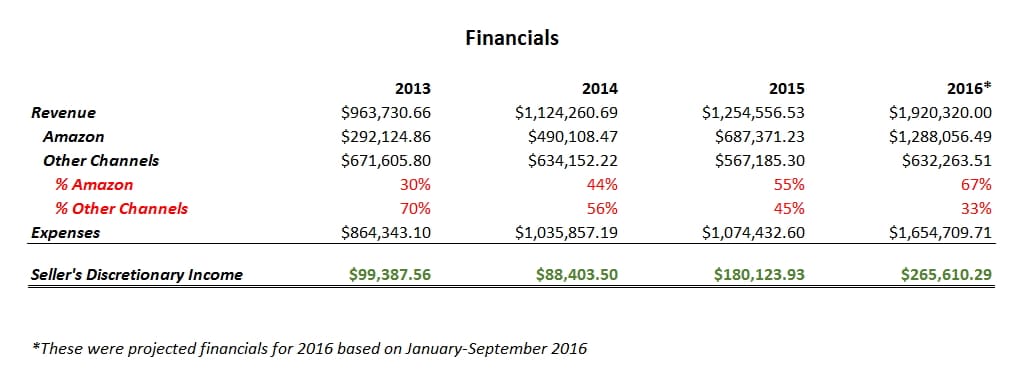
I know many ecommerce business owners who are in denial that their businesses are essentially Amazon businesses and spend 80% of their effort trying to squeeze the most juice from the other 20% of their non-Amazon sales. In fact, I used to be one of these people with my last company. I spent most of my time trying to build up our website and to very little success. No matter what I did, the Amazon portion of our sales way outpaced every other channel. In my new company, I will will not make this mistake. I will sell on eBay and our own Shopify store but I will not deny the fact that 80% of our sales will likely come from Amazon.
Focus on Other Countries
I intend to spend a bunch of my time focusing on other marketplaces. Immediately, I will focus on Amazon.ca and by 2018 I want to also be selling in Europe. I intend for Canada to account for 25% of our sales by 2018. Amazon.com is still huge but the real growth opportunities, IMO, are Amazon Canada, Amazon Europe, and, soon, Amazon Australia.
My Timeline for Getting to $1m
If I learned one thing in my last company it's that product development and procurement takes way longer than you ever expect.
In general, I think the product development and launch timeframe looks a little something as follows:
- [Product Research & Development: 3 months]: Product research, Finding Suppliers, Samples, and Negotiation with Suppliers
- [Product Production & Shipping: 3 months]: Product production, shipping from China, domestic shipping including to FBA
- [Product Launch: 2 months]: Getting reviews, getting photographs, optimizing search campaigns, getting Amazon traction
So, in general, from the very second I start researching a product to the time it's selling consistently on Amazon, I expect it to take about 8 months, plus or minus a couple of months. In other words, it's a very time intensive process. This is why I expect to use most of 2017 for product development and to get traction, not actually to sell products.
The First, and Most Important, Step – Finding a Niche
I more or less took a full 2 months away from ecommerce. During this time away I did not have an Amazon account, I did not have a Shopify account, and I did not talk to any Suppliers on Alibaba. BUT, almost from the day I sold my company I was constantly thinking “What sort of ecommerce business am I going to do next?”
One thing I knew from running my previous company was that picking a good niche is absolutely critical. So many importers and Amazon wantrepreneurs focus on finding products first. Wrong wrong wrong. You need to pick a niche first. We go into some strategies on how to pick a niche in our course we have (well worth the money just for this lesson alone, IMO). I literally spent nearly 2 months trying to find the perfect niche.
I have a number of criteria I use to determine a good niche but my top criteria are as follows:
- The niche has the opportunity to source 100+ products from in China
- The niche is something I can be passionate about (or at the very least interested in)
- The niche has a definable audience
The most important thing is that I need to be able to import 100 products within that niche. I always use the example of marathon running vs back country hiking. For marathon running there is a very small number of products you can import from China (water bottles and socks perhaps?). However, for back country hiking there are countless items (tents, sleeping bags, hiking poles, cooking utensils, etc.).
The next most important thing is that I need to be able to take an interest in it and preferably passionate about it. I don't want to be selling bingo daubers to seniors.
Finally, there needs to be a definable audience for the niche. If you're selling key chains, there's no way to really identify that and define that audience which makes your marketing and advertising life infinitely harder (everyone needs a keychain!). If you're selling something like adult coloring books, there's a very clearly defined audience that you can market to.
In the beginning of 2017 I finally found the niche I was looking. I won't share exactly what this niche is publicly (I do in the course though), but I will say publicly that it is in the outdoor recreation sphere.
Once You Know Your Niche, Start Registering Accounts
As soon as I decided on my niche, I started registering various accounts including:
- Amazon Seller Central Account
- eBay Account
- Shopify Account
- Domain Name
I knew I was a minimum 3 months away from launching any products but I know that it is critical to have your Seller Central Amazon account started immediately even if it was costing me $39.99/month for a Professional Selling Plan. Amazon puts you in a sandbox for 30 days or so and it basically makes it impossible to win the Buy Box. I also needed to get category approval in my category which can either be extremely easy or extremely difficult. You should register your Seller Central account before you ever pay for a single product from China. You should be able to register a Seller Central account without any hiccups but the proverbial $h!T happens so you should register it as soon as possible.
At the same time I registered my Amazon account, I also registered an eBay account and Shopify account. The eBay account is free to register and I started doing some buying on it to start and get some initial feedback. eBay, like Amazon, also tends to place you in a probationary period for a month or two. I also registered a Shopify account so I could start building out our store. I also ended up spending $13,000 on a domain name that I didn't really need. I looked at it as an investment and a kick in the butt to stop procrastinating but any $13 domain name from GoDaddy would have sufficed.
Conclusion
This concludes the first part of this multi-part series on launching a $1m Company. In the next follow-ups I'll discuss my product selection criteria, product launch strategy, and initial results.
If there's one thing I can't emphasize more, it's the importance in selecting a niche when starting your company. Do not focus on products. It's not a guaranteed formula for success but the probability for success is way higher than starting with products first.
If you're running an ecommerce company, what was your strategy for launching? Did you start with products first or a niche first?


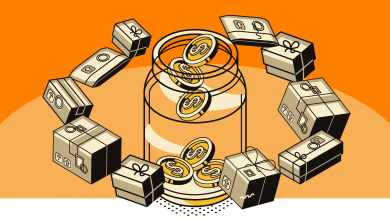
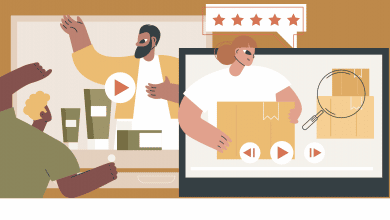
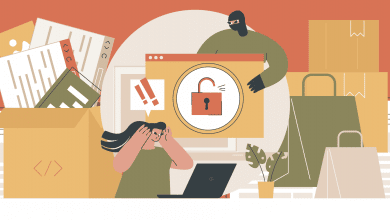
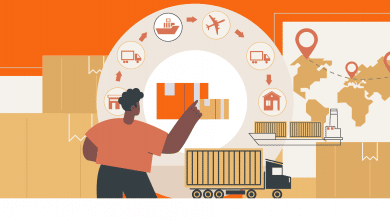
Hi Dave,
I’m in China now, a students in xuzhou city, I’m short on big cash. Can I start with a $100-300 capital?
What are the disadvantages of dealing with products of retail price within $5 – $15?
You’re reply will be appreciated.
It’s a very tight budget so you’d have to be realistic with your expected returns – at best you would double or trip your money. Keep in mind a professional Amazon selling plan is about $40/mo as well.
Dave
How many hours a week did you work on your previous ecommerce venture and how many hours are you working currently?
Ecommerce sounds like a good business to get into but weighing the cost / benefit analysis. I run a consulting and headhunting business based in Asia and San Fran with another partner. We’re both pulling on the average 500k in sales per year and our expenses are 1/5 of that, so it’s minimal and we’re not carrying any inventory, fixed costs, etc.
We both work 60-80 hours per week.
After your breakdown of 2 mil dollars in revenue your pretax profit is 300k roughly. What are your feelings on the risk / return for ecommerce and are you satisfied with bringing home a take home pay in the high 200k’s?
Thanks Dave
When I’m trying to grow sales it’s close to 40 hours a week if you take everything into consideration – it’s a relatively self-running business once you get initial traction though. The big issue with ecommerce is that you have capital invested – generally about 10% of sales. A consulting company you have minimal. So the risk for ecommerce isn’t just losing your sales – it’s losing your sales + investment. Either way, I still think it’s one of the best business opportunities available right now.
testing 1 2 3
load and clear
Hello Dave
This is Ashkan from Iran,
I read your Posts on chineseimporting before and now hear
thanks for your share
would you mind please give us more example about niches and how to select that
The best niche for you is widely dependent on you. This article gives some good criteria though or you can check out our course :)
Focus on low-demand/low-competition items with retail prices of $50-250
Why focus on low demand items?
Low competition :)
So why not high demand, low competition?
That’s ideal and the diamonds in the rough – very difficult to find.